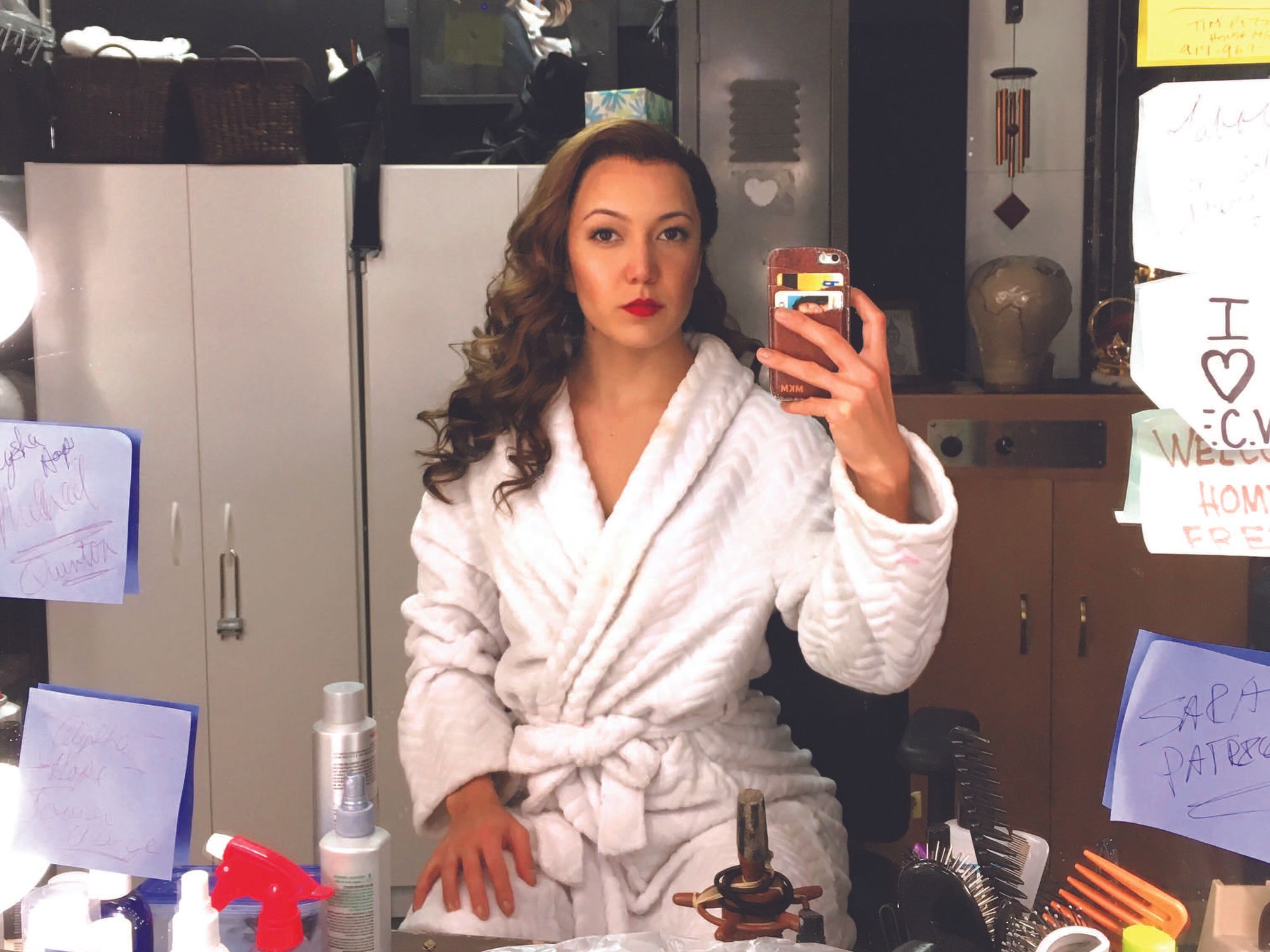The Pre-Performance Routine That Will Get You Into Character
It’s the day of the show. You’ve rehearsed countless hours and meticulously developed your character, and you’re ready to make it count. It’s time to get into the right headspace without “getting in your head.” Time to transform naturally without overthinking it. For all the artistry that leads to this moment, getting into character can be an art form in itself, unique to each dancer but resting on some common principles.
Get Grounded
The foundation of a great performance starts before setting foot in the theater or on set. It’s about finding your (mental) center, whatever that looks like for you.
While driving to set, Mollee Gray, a Los Angeles–based dancer and “So You Think You Can Dance” alum, loves to turn up the volume and sing loudly to country music. This serves a double purpose, waking up her vocal chords and taking her to her happy place, so that once she arrives she’s ready for anything—which is especially helpful when filming scenes out of order.
For Broadway dancer Morgan Marcell, preshow meditation creates a clean slate. “It’s really important for me to be in a mental space that’s able to accept new things, because then I’m able to make decisions as the character more freely,” she says. If she’s in a distracting location, like a crowded train, she might listen to music or a podcast that the character would listen to. “It gives you a baseline, a mood you’ve set for yourself,” she says.
Viktorina Kapitonova, principal dancer with Boston Ballet, takes quiet time at home before a show. “I lay down and visualize the performance,” she says, “mentally playing the role, feeling her emotions, her thoughts, stepping into her mind.”

Photo by Rosalie O’Connor, Courtesy Boston Ballet
Trust the Rehearsal Process
You’ve spent weeks, or even months, developing your character. Now’s the time to let it go and trust that you’ve done enough. On the day of a performance, getting in and out of character for Gray is “almost like an on-and-off switch,” she says. “On set, I’m not trying to get to a place. My character’s so developed in my head that that’s where I automatically go.”
During Kapitonova’s preshow routine, she puts this trust into practice by intentionally leaving her character behind for the time it takes to warm up. “I need to get my body ready as a machine without thoughts about her,” she says. “She would not go through the exercises I need to prevent injury.”
Let the Transformation Begin
Find mental cues that will trigger your sense memory to get into your character’s mindset. Marcell’s transformation, for instance, begins when she puts on her character’s wig. “For Moulin Rouge! it’s a 1900s hairstyle, and seeing yourself in the mirror, it reminds you of the journey you’re going to go on,” she says. The feel of each character’s shoes also shifts her mindset. “When I put those cancan boots on, my body knows that it’s time to go to war,” she says. In some shows, she might even reinforce sense memory by giving her character a signature scent.
Kapitonova develops small phrases or gestures that she can use in a pinch to help her jump into character quickly, “like a visualization shortcut,” she says. For Giselle, she’ll mentally go to the initial meeting with Albrecht, specifically feeling the moment with her eyes and smile. Or to cue her in to the moment of meeting Bathilde and admiring her dress on the floor, she’ll feel a fabric against her face.
As she waits to go onstage, Kapitonova homes in on her character’s starting point—without thinking about the rest of the story. “It’s really important to start where it all starts and to live in the moment,” she says.
Tailor the Prep to Your Character
Marcell customizes her warm-up to each role, noting the way a specific character uses her body or holds tension.
For some, getting into character might affect preshow interactions with cast and crew. If Gray’s shooting an emotionally difficult scene, for instance, she’ll limit interactions on set. When Kapitonova is dancing Giselle, she’ll refrain from spending time with Albrecht backstage so that they can “meet” for the first time onstage. When dancing Sugar Plum, “I try to have fun with the Nutcracker prince and all the characters as if I am the kind queen of Sugarland,” she says. “Some laughing, jokes, hugs and ‘toi, toi, toi’s to really try to get into the emotion.”
Embrace Your Breaks
Whether it’s intermission or a lunch break in a long day of shooting, a quick reprieve from the emotional intensity can ultimately help you embody the character. “If you’re constantly emoting and giving a great performance, you need to take a step away and really gather your thoughts,” says Gray.
And, when it’s time, the character will still be there. “As soon as you hear ‘Quiet on set,’ ” says Gray, “everything else disappears.”




